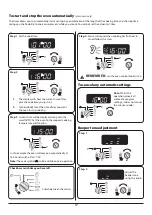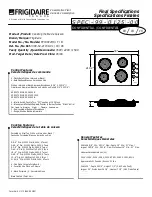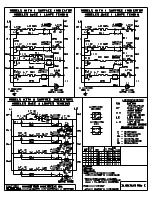
3
brought into contact with a hot surface.
•
DO NOT
use hotplate protectors, foil or
hotplate covers of any description. These
may affect the safe use of your hotplate
burners and are potentially hazardous to
health.
•
NEVER
heat unopened food containers.
Pressure build up may make the containers
burst and cause injury.
•
DO NOT
use unstable saucepans.
ALWAYS
make sure that you position the handles
away from the edge of the hotplate.
•
NEVER
leave the hotplate unattended
at high heat settings. Pans boiling over
can cause smoking, and greasy spills may
catch on fire. Use a deep fat thermometer
whenever possible to prevent fat
overheating beyond the smoking point.
•
Unattended cooking on a hob with fat or
oil can be dangerous and may result in fire.
•
NEVER
leave a chip pan unattended.
ALWAYS
heat fat slowly, and watch as it
heats. Deep fry pans should be only one
third full of fat.
•
NEVER
try to move a pan of hot fat,
especially a deep fat fryer. Wait until the
fat is cool. Filling the pan too full of fat can
cause spill over when food is added. If you
use a combination of oils or fats in frying,
stir them together before heating, or as the
fats melt.
•
Foods for frying should be as dry as
possible. Frost on frozen foods or moisture
on fresh foods can cause hot fat to bubble
up and over the sides of the pan. Carefully
watch for spills or overheating of foods
when frying at high or medium high
temperatures.
•
DO NOT
use the top of the flue (the slots
along the back of the cooker) for warming
plates, dishes, drying tea towels or
softening butter.
•
DO NOT
use water on grease fires and
never pick up a flaming pan. Turn the
controls off and then smother a flaming
pan on a surface unit by covering the pan
completely with a well fitting lid or baking
tray. If available, use a multi-purpose dry
chemical or foam-type fire extinguisher.
•
DO NOT
modify this appliance. This
appliance is not intended to be operated
by means of external timer or separated
remote-control system.
•
If flammable materials are stored in the
drawer, oven(s) or grill(s) it may explode
and result in fire or property damage.
Ceramic care
•
Take care when touching the marked
cooking areas of the hob.
•
Use adequately sized pans with flat
bottoms that are large enough to cover
the surface of the hotplate heating area.
The use of undersized pans will expose a
portion of the surface unit to direct contact
and may result in the ignition of clothing.
•
Only certain types of glass, glass-ceramic,
earthenware or other glazed containers
are suitable for use on the
warming zone
;
others may break because of the sudden
change in temperature.
•
Only certain types of glass, glass-ceramic,
earthenware or other glazed containers are
suitable for
hotplate cooking
; others may
break because of the sudden change in
temperature.
NEVER
cook directly on the
hob surface (
Fig. 1.1
).
•
Only certain types stainless steel,
enamelled steel pans or cast iron pans with
enamelled bases are suitable for induction
hob cooking.
•
Take care
NOT
to scratch the surface when
placing cookware on the glass panel.








































